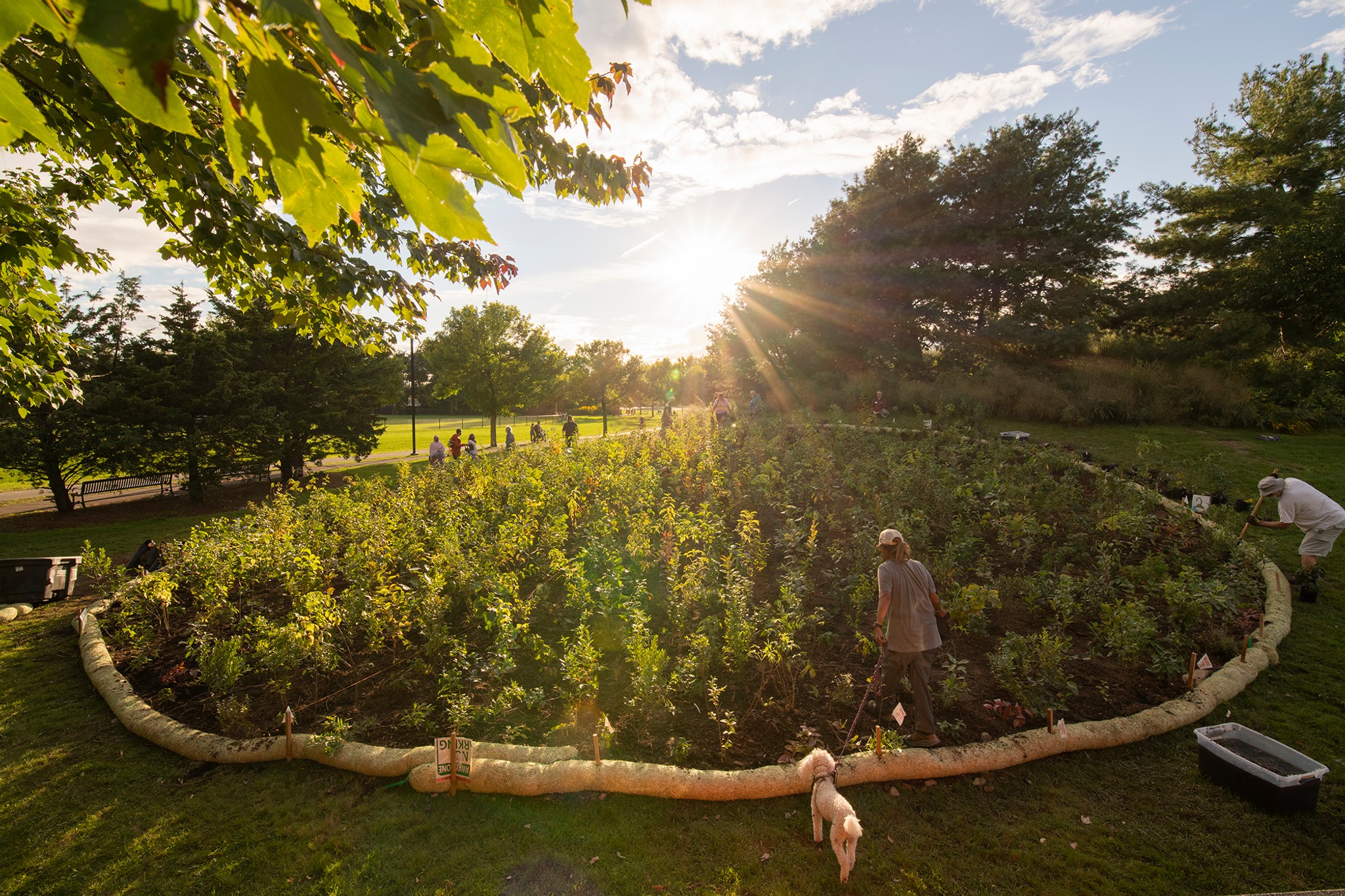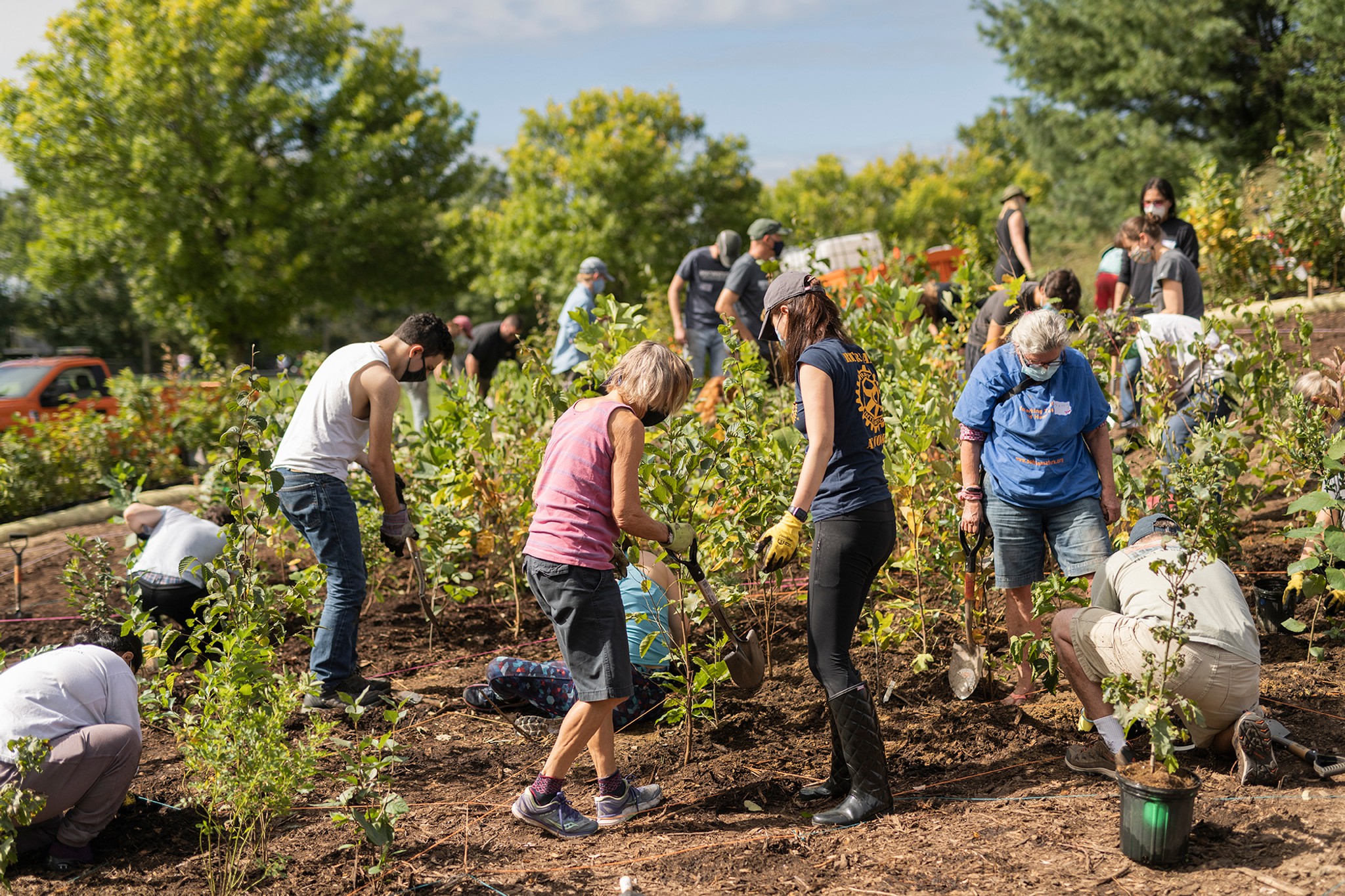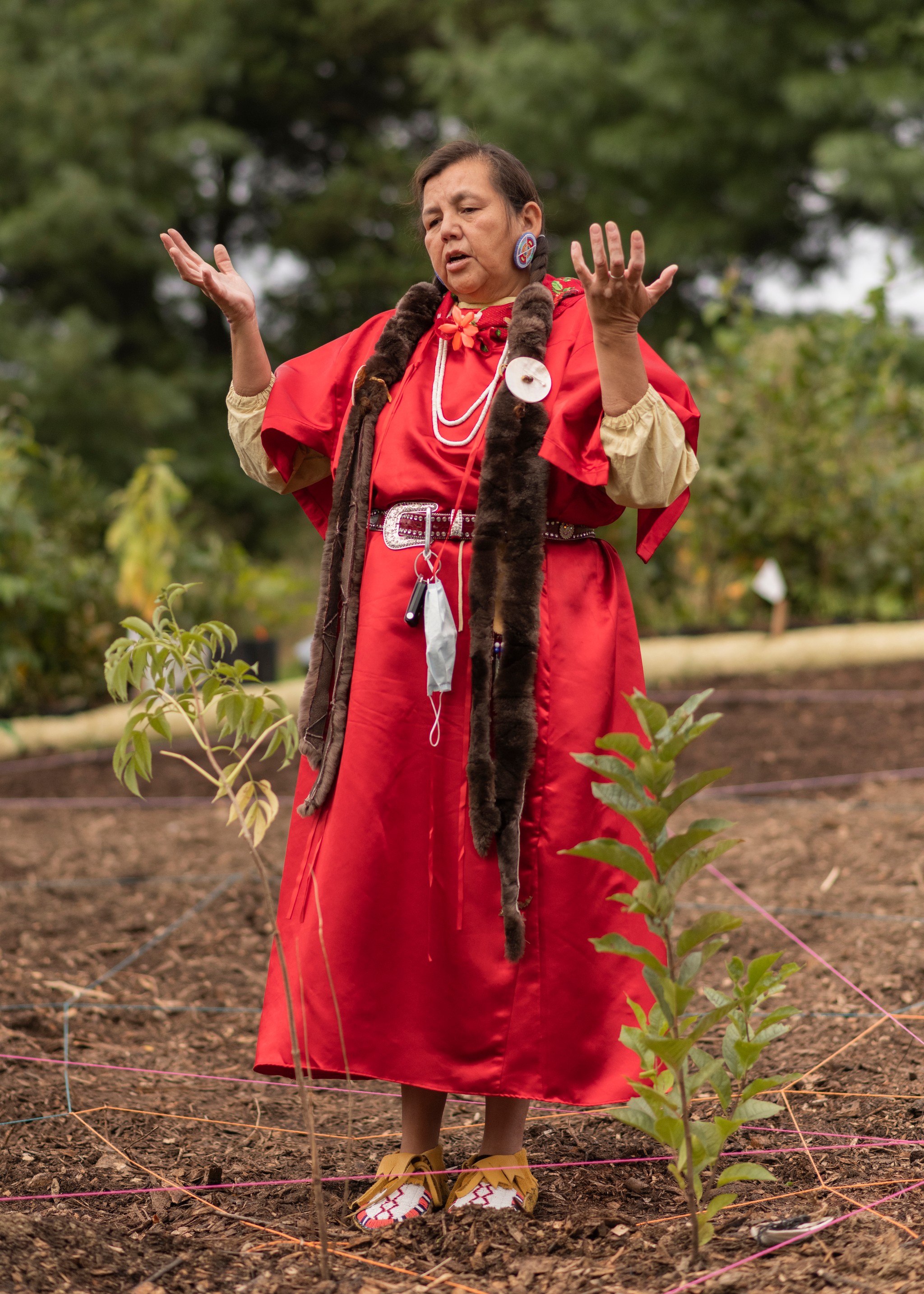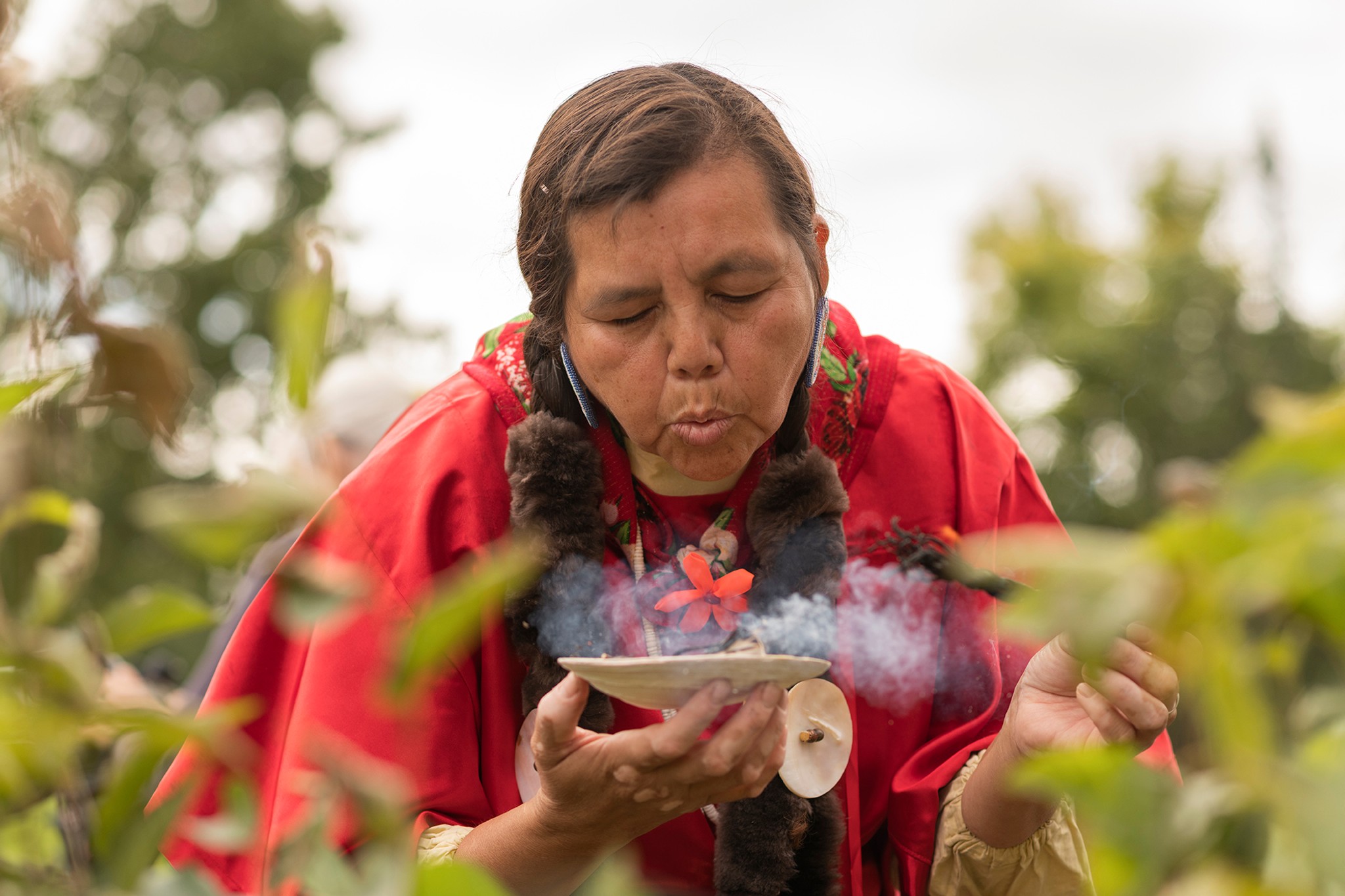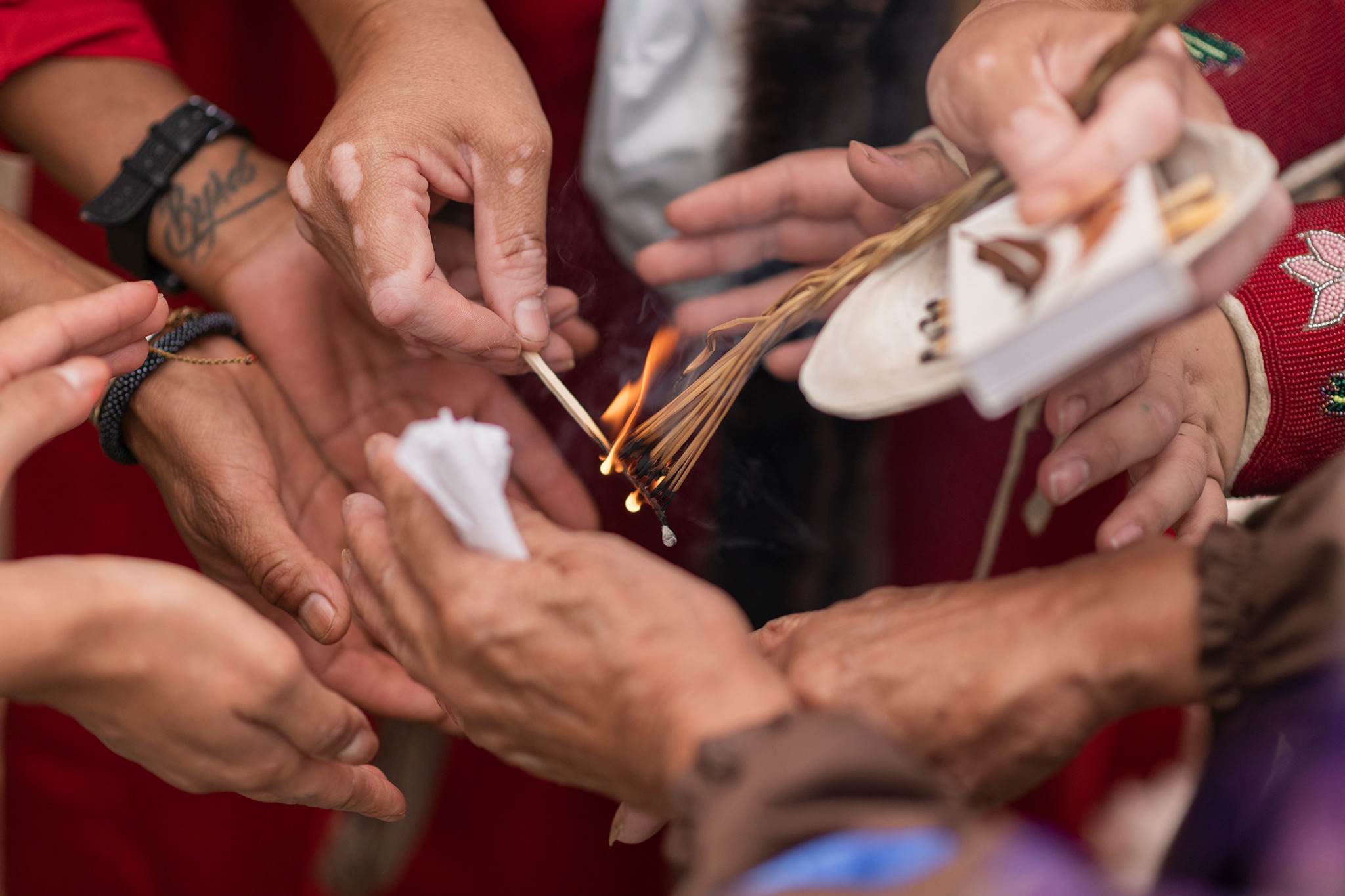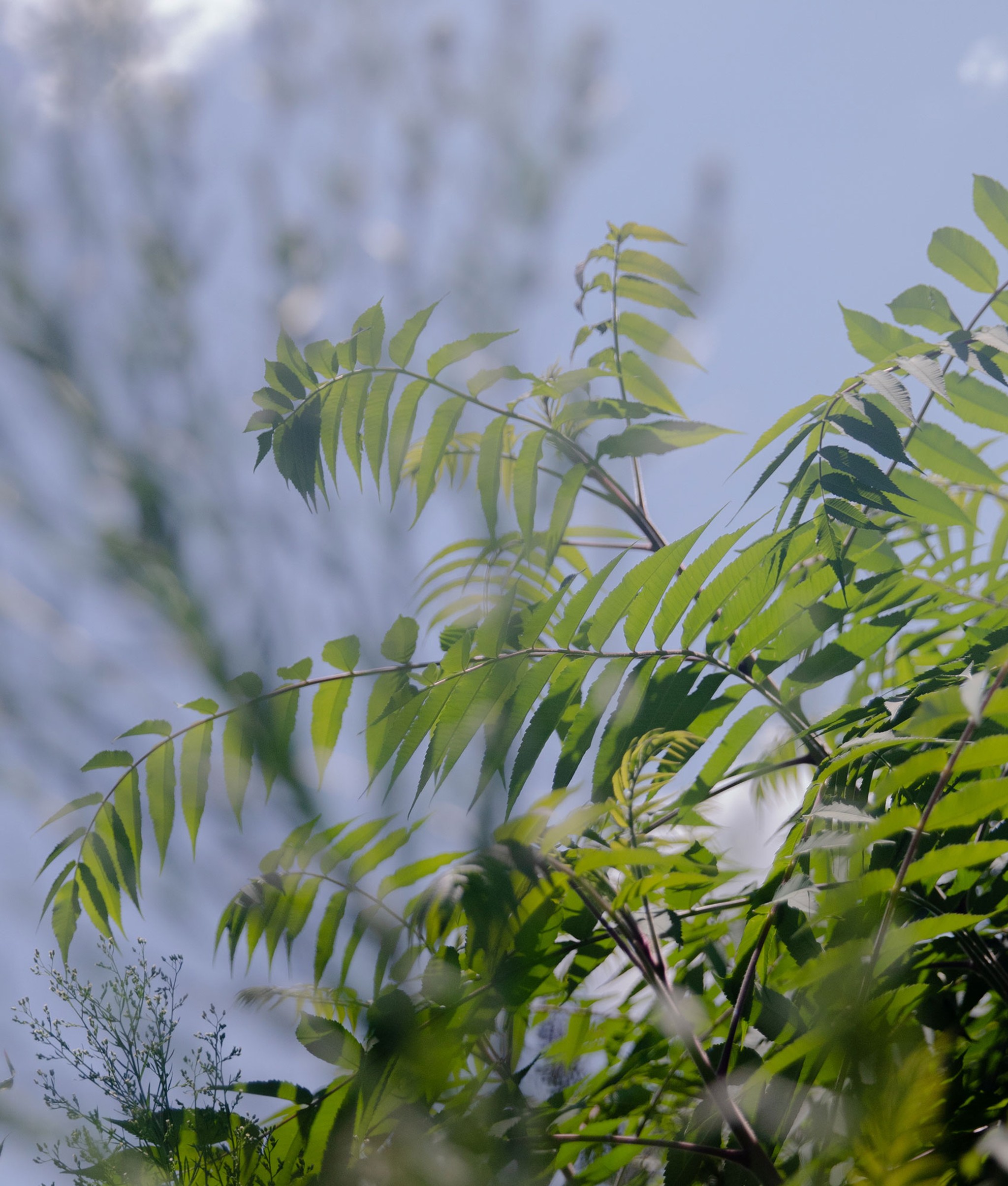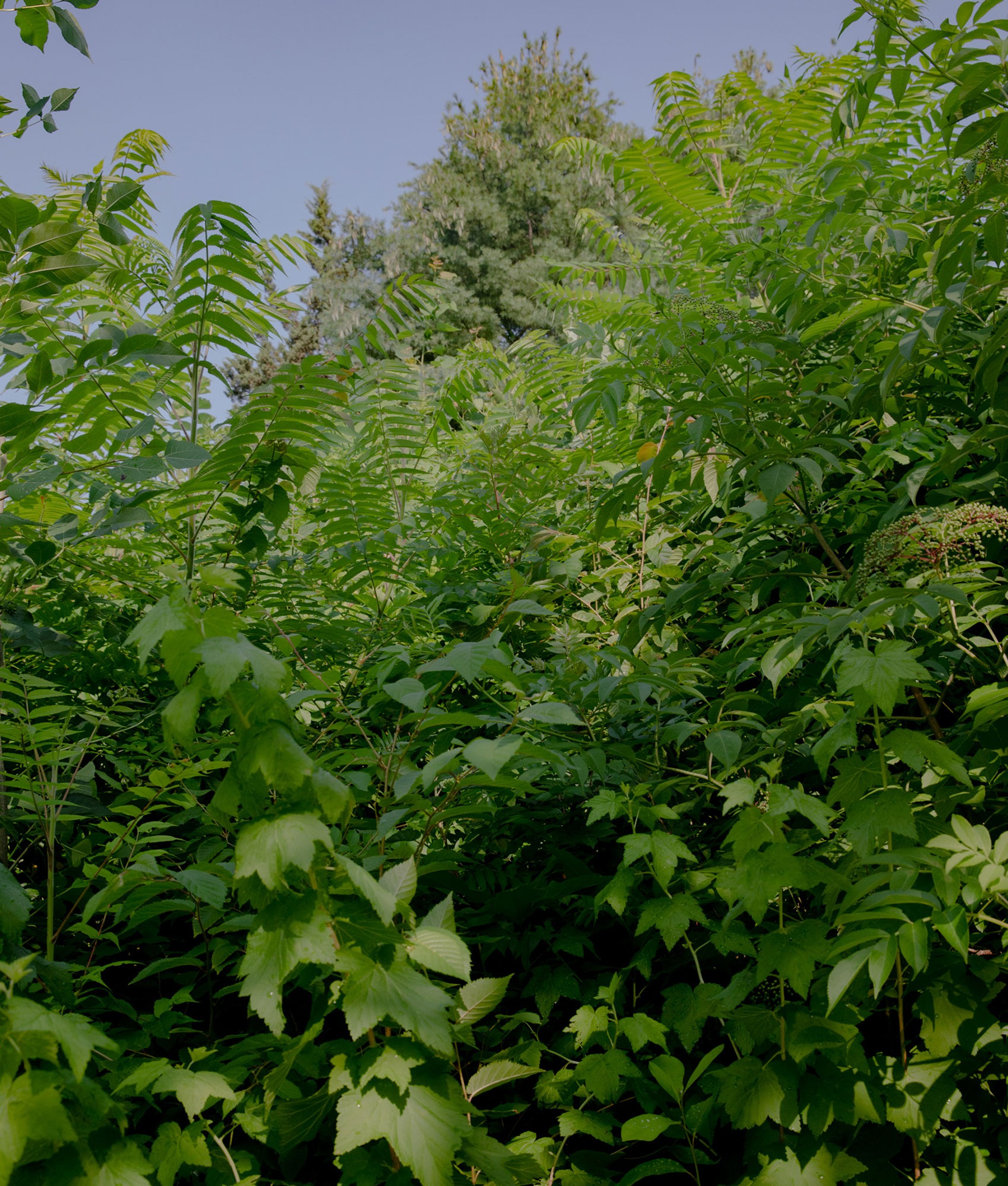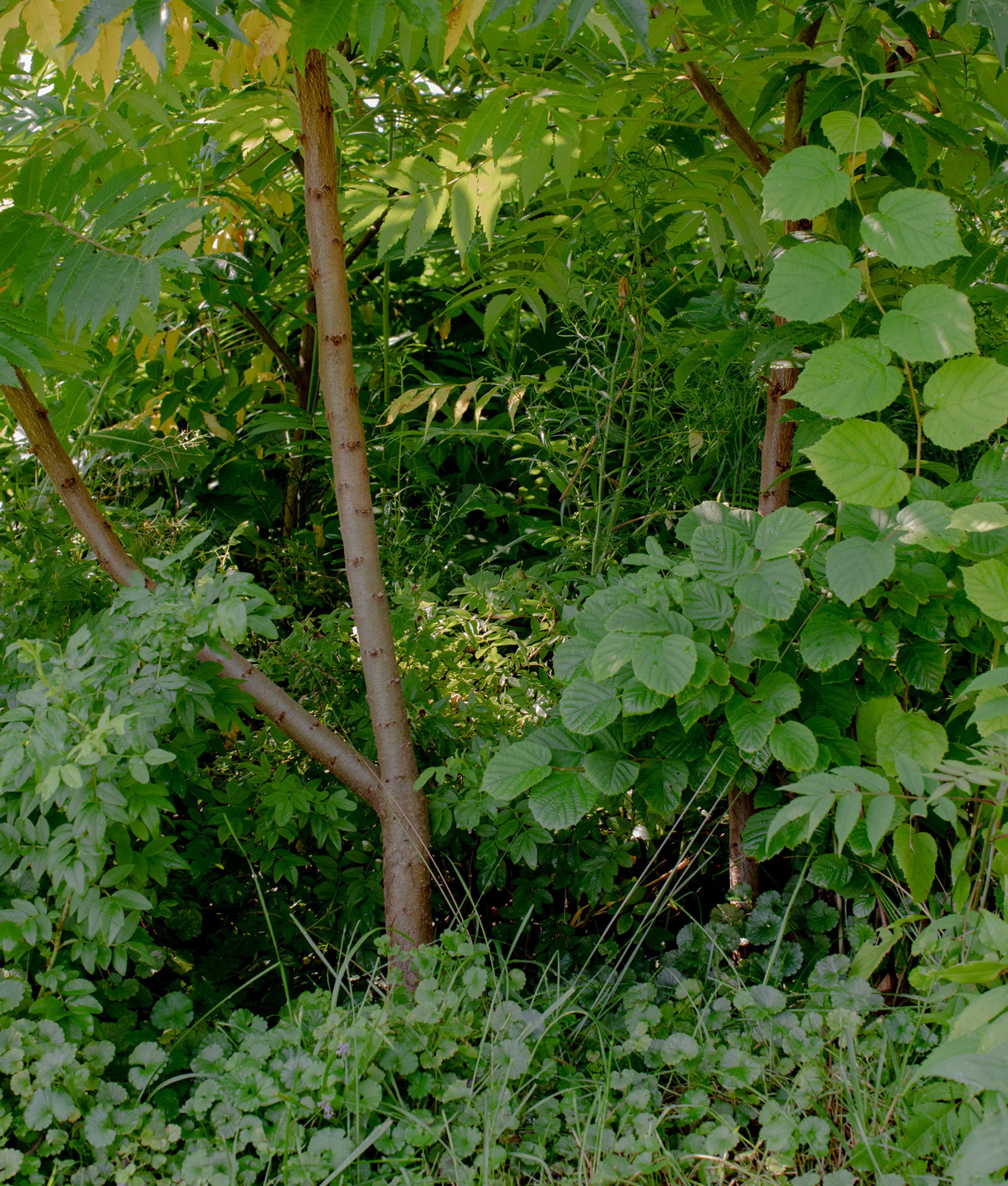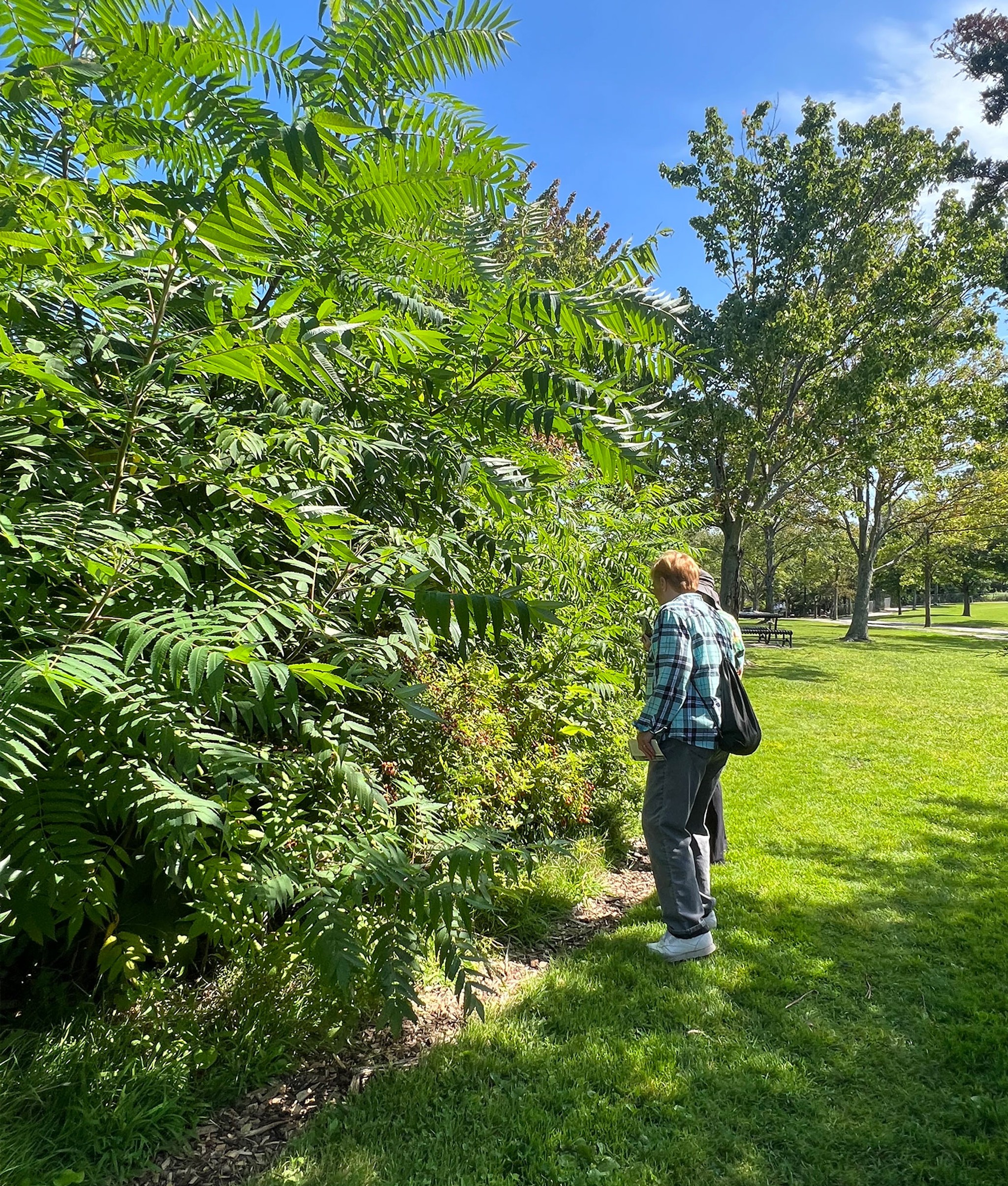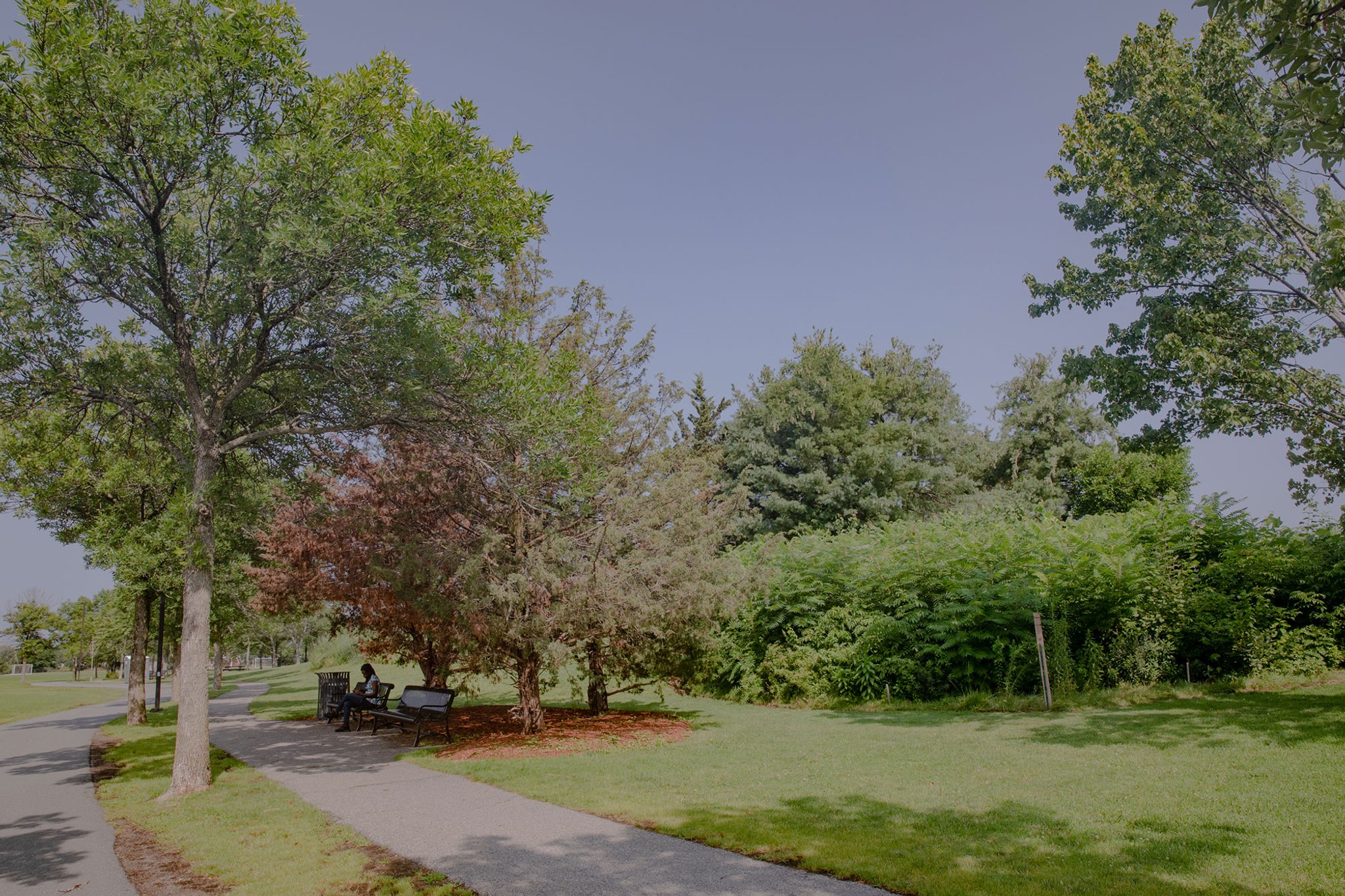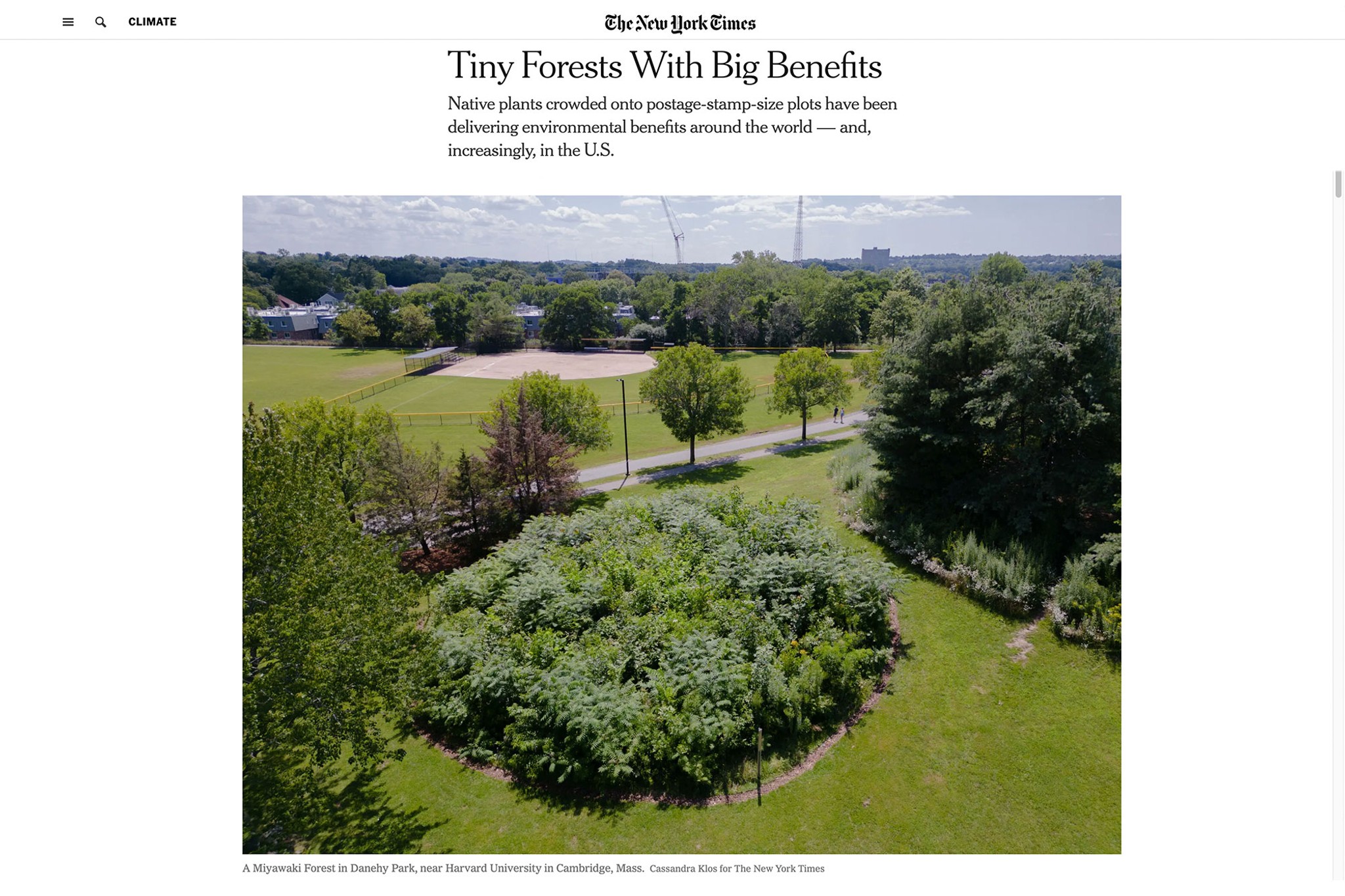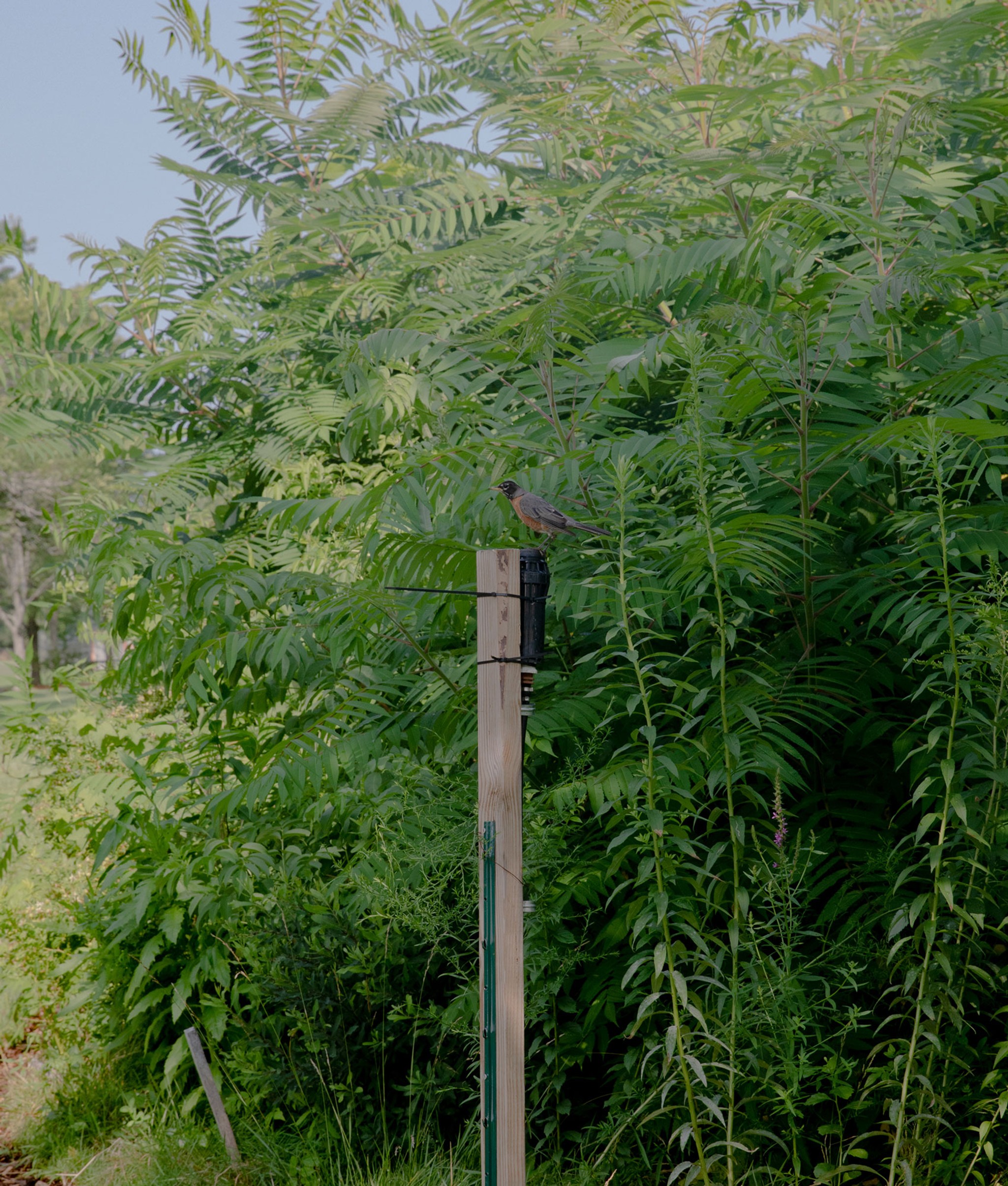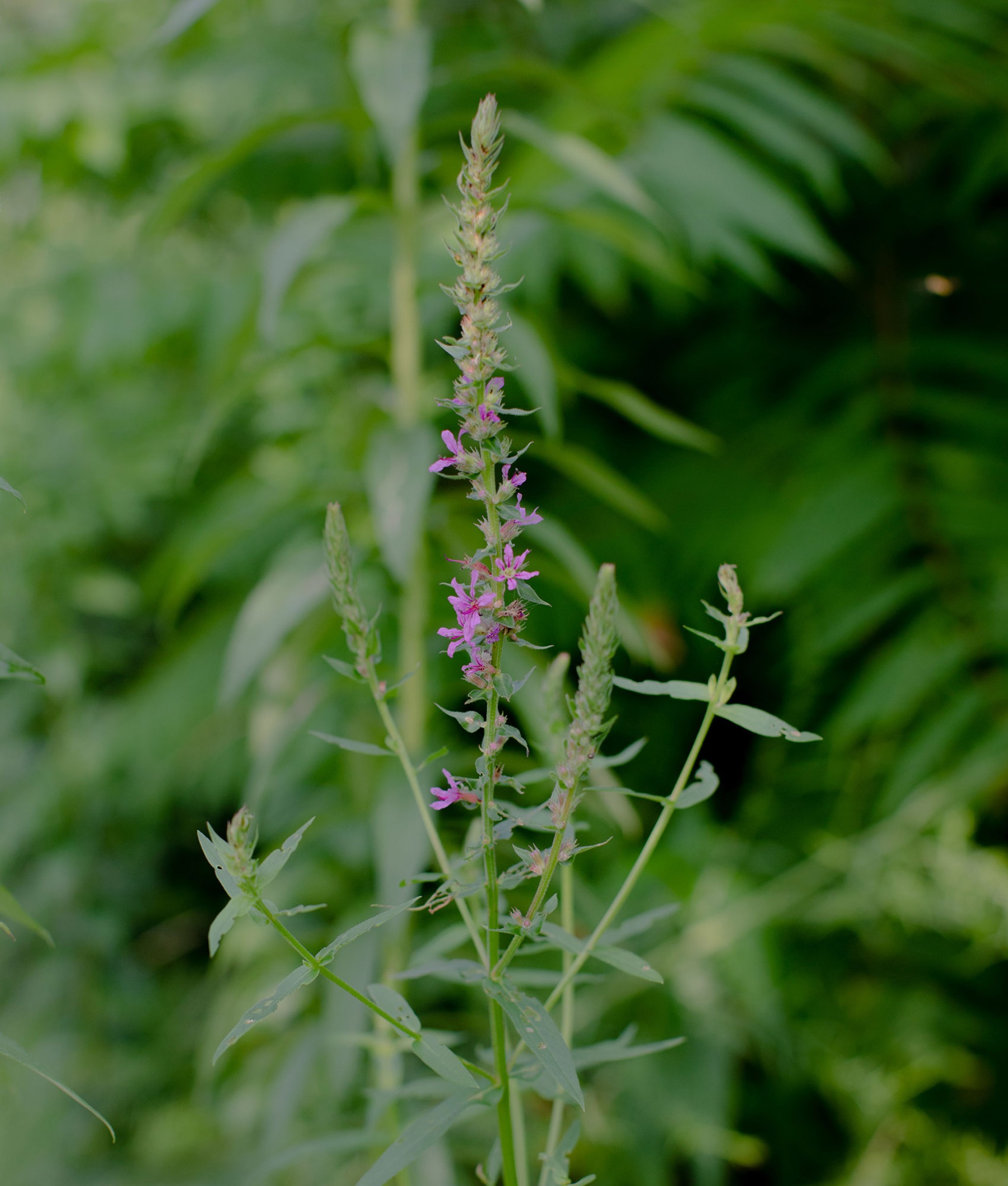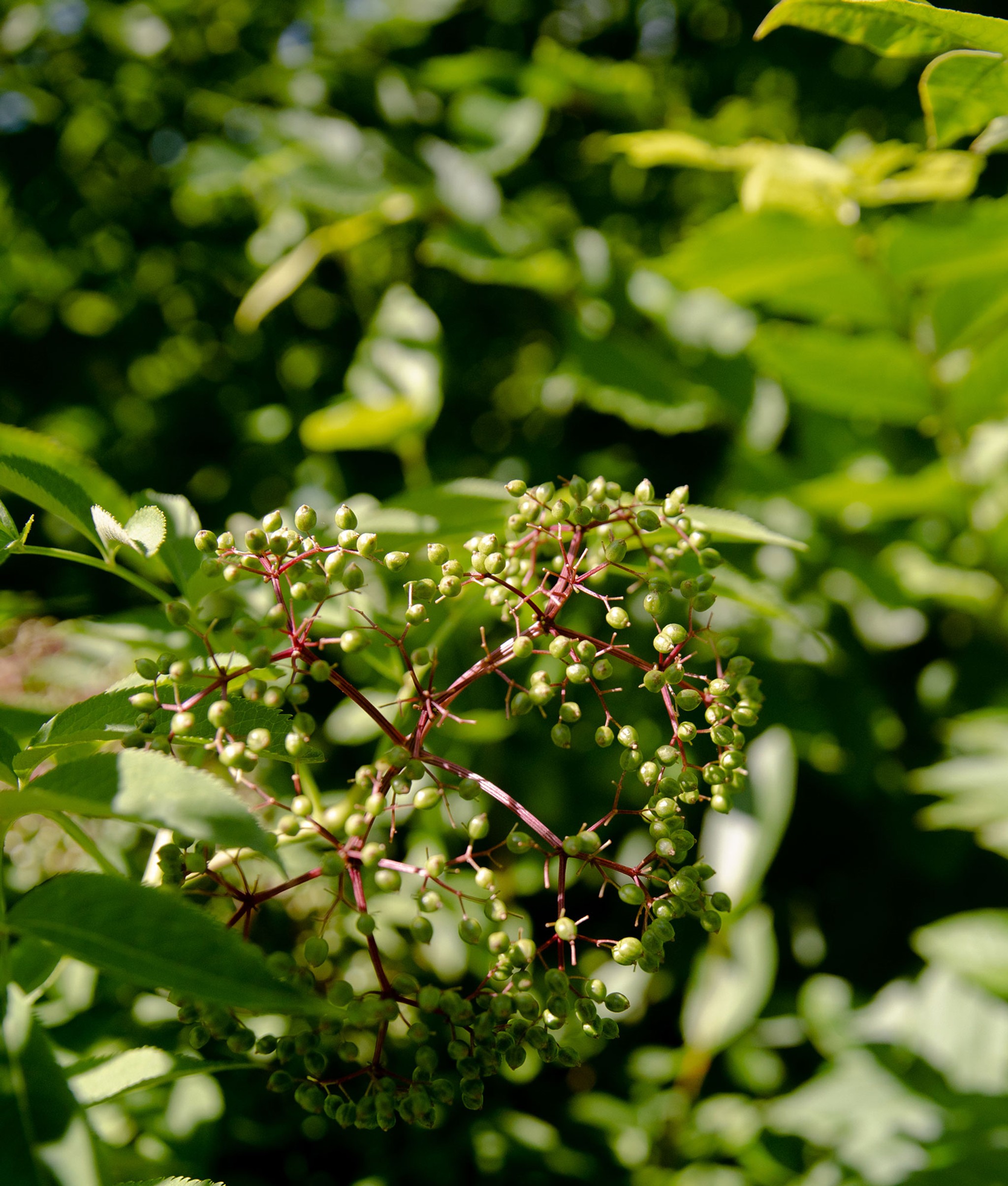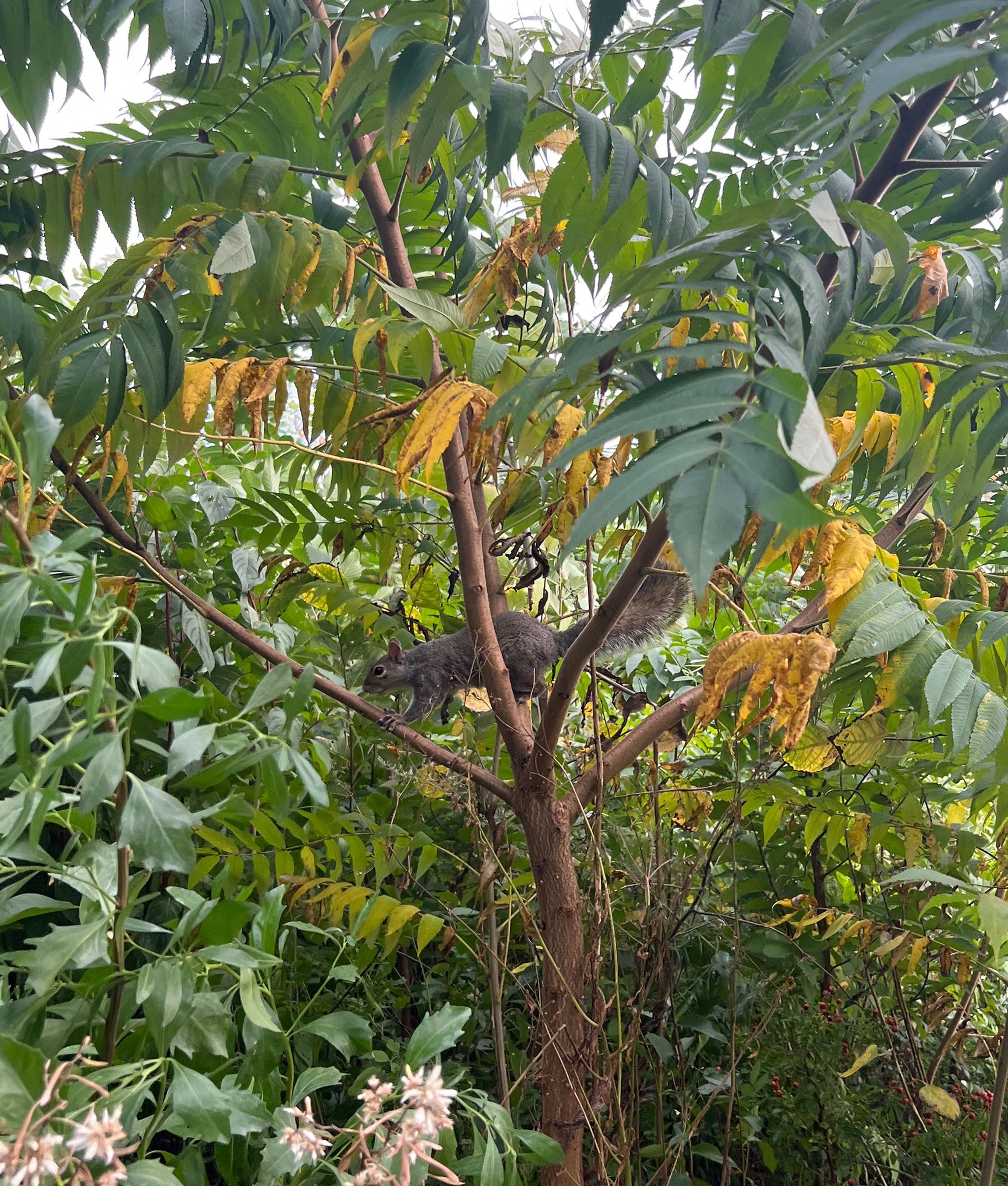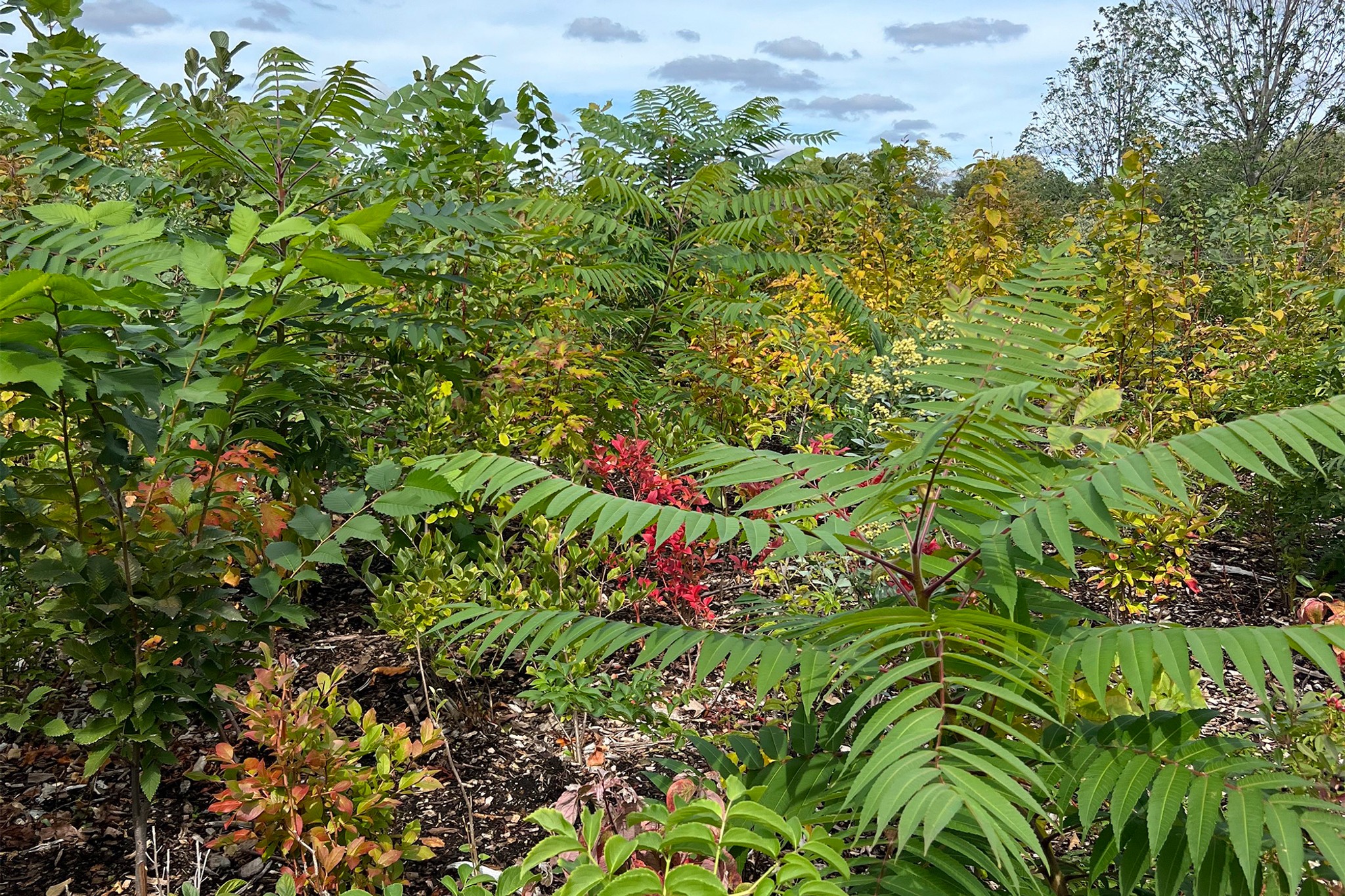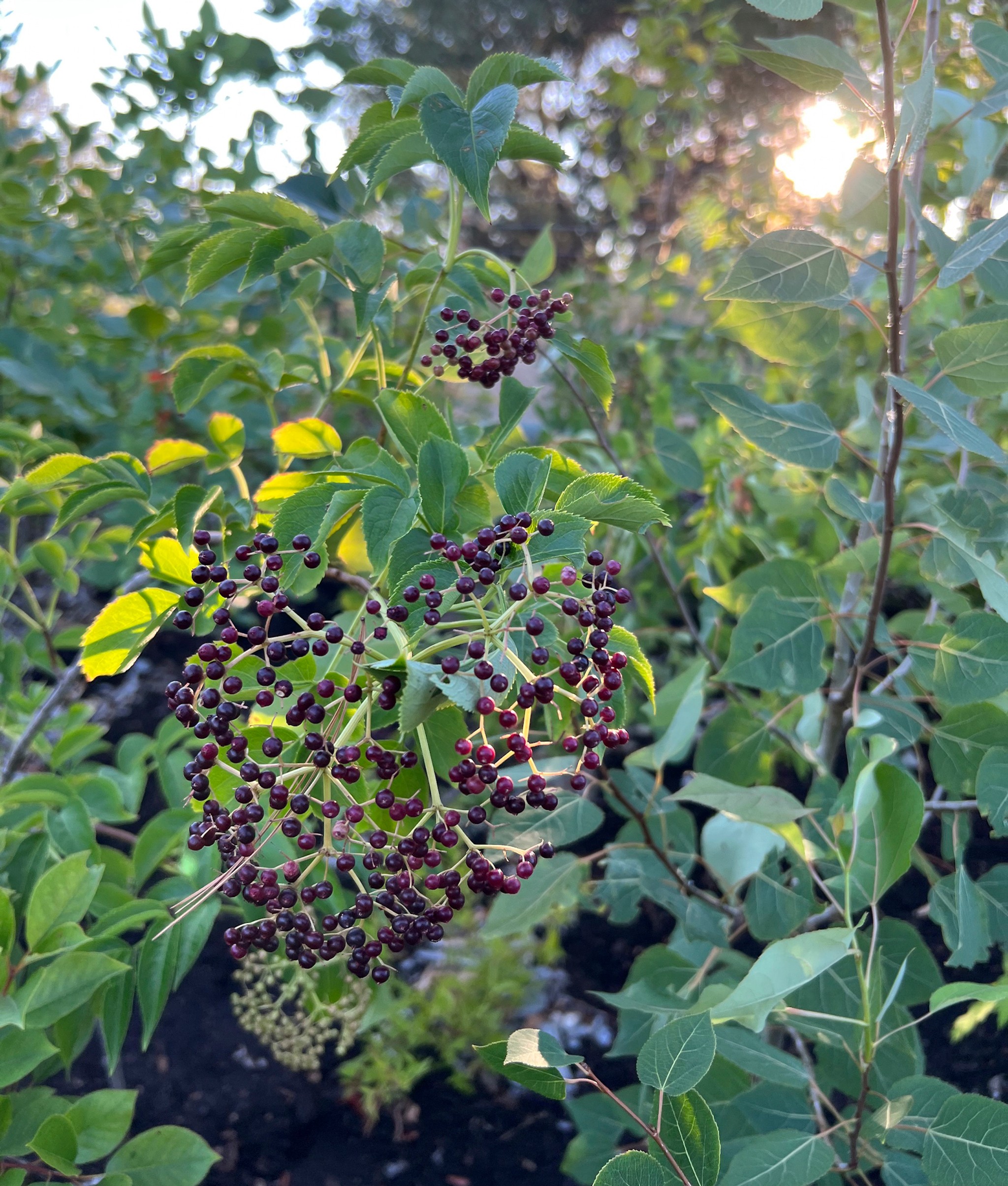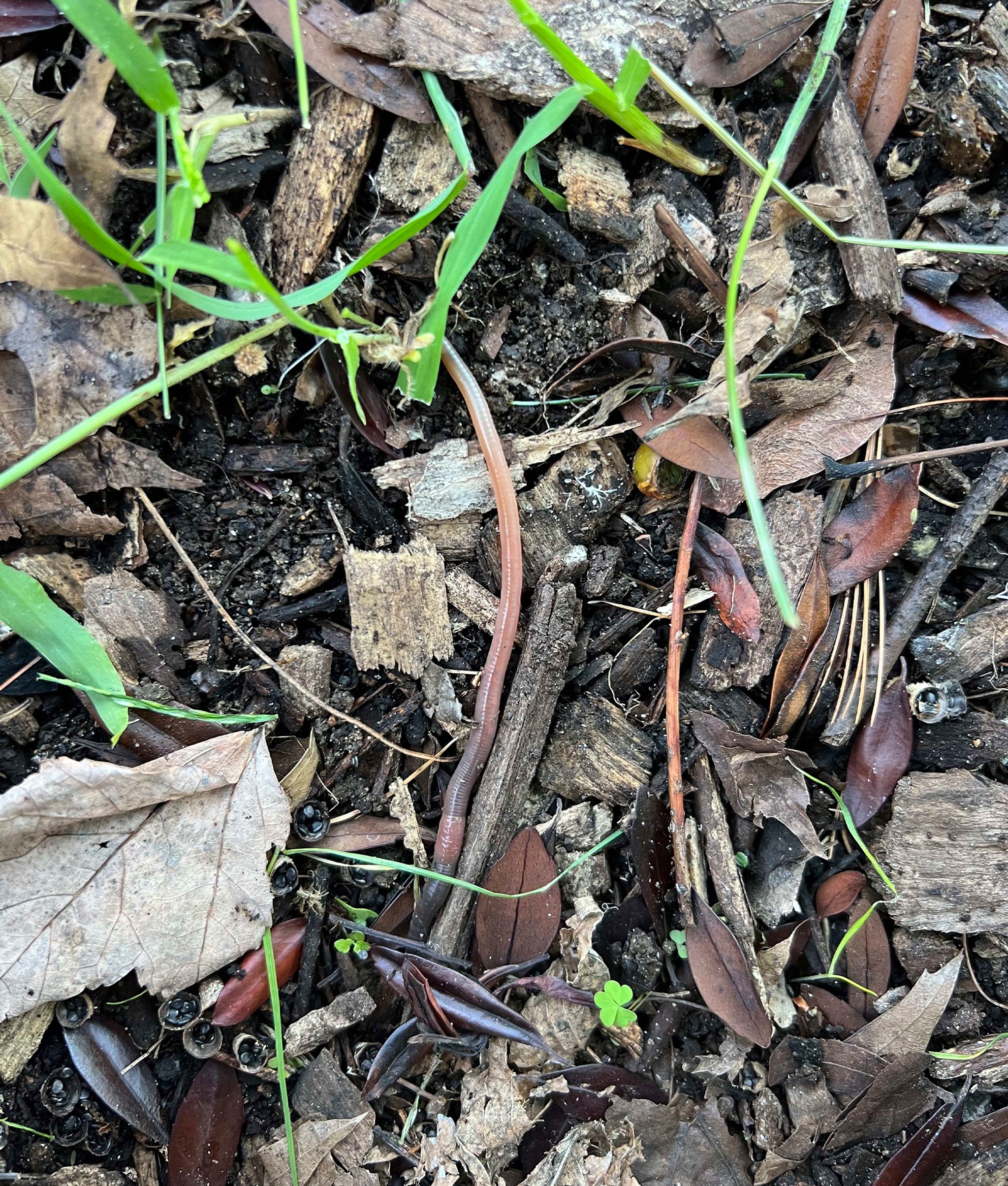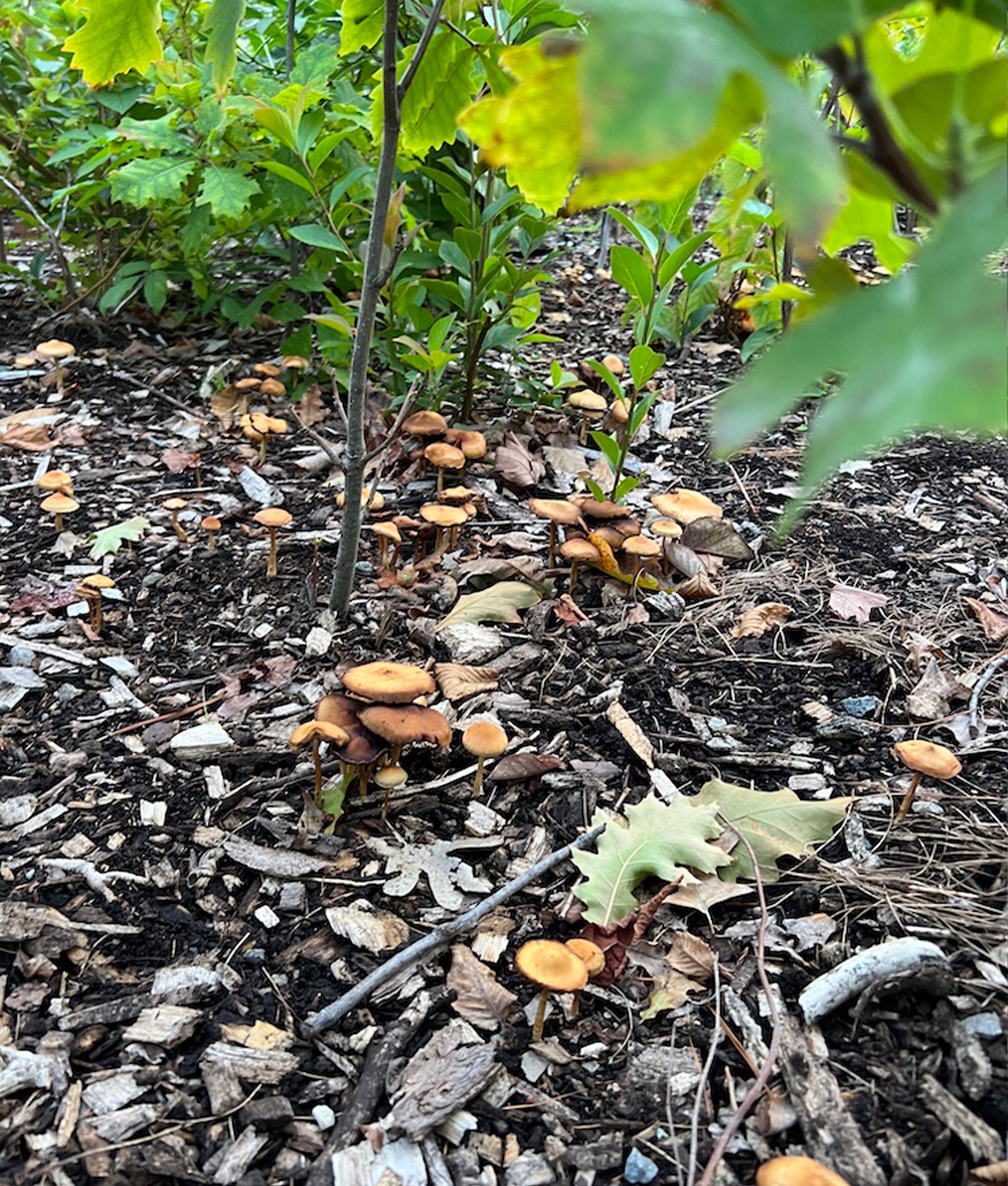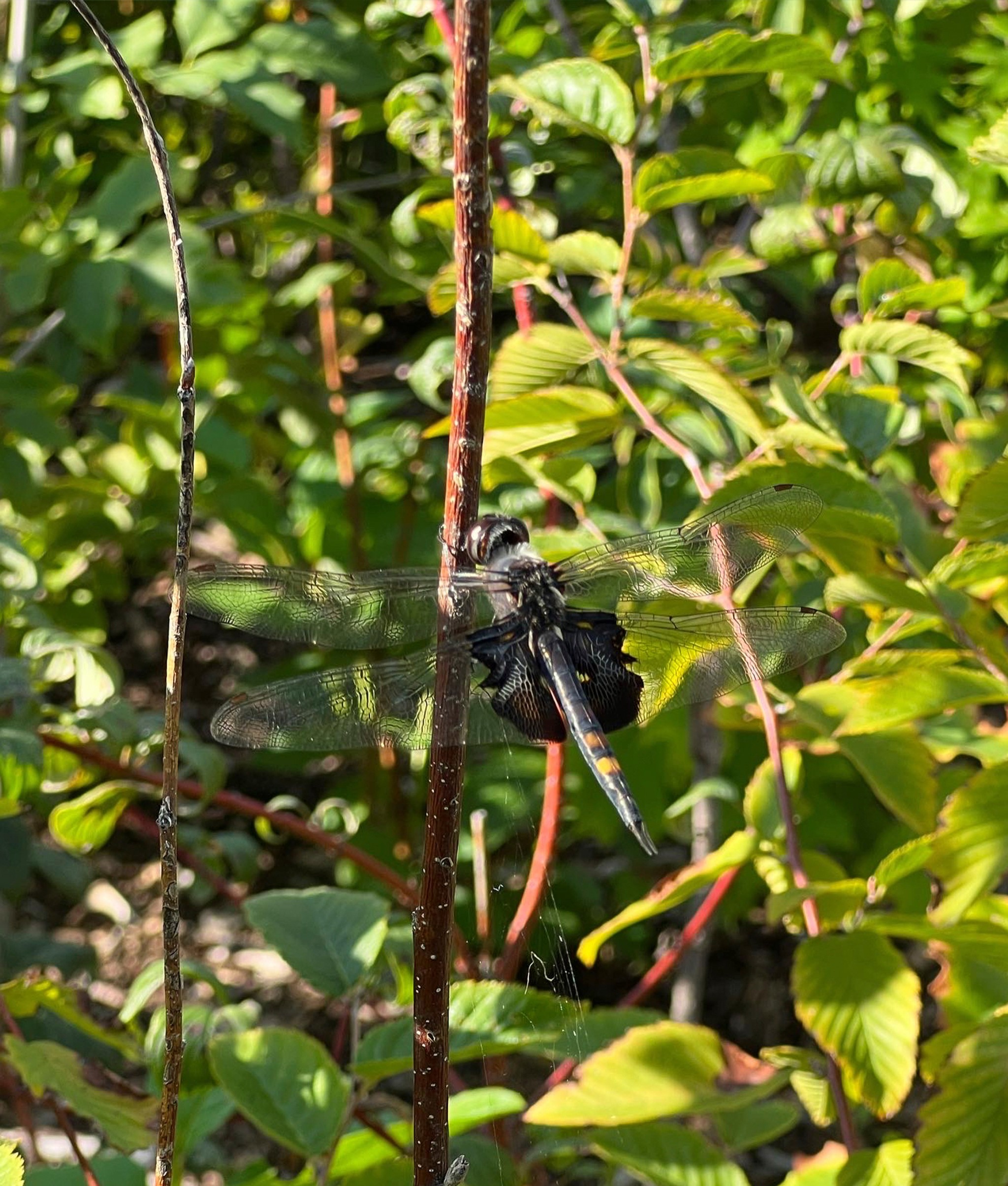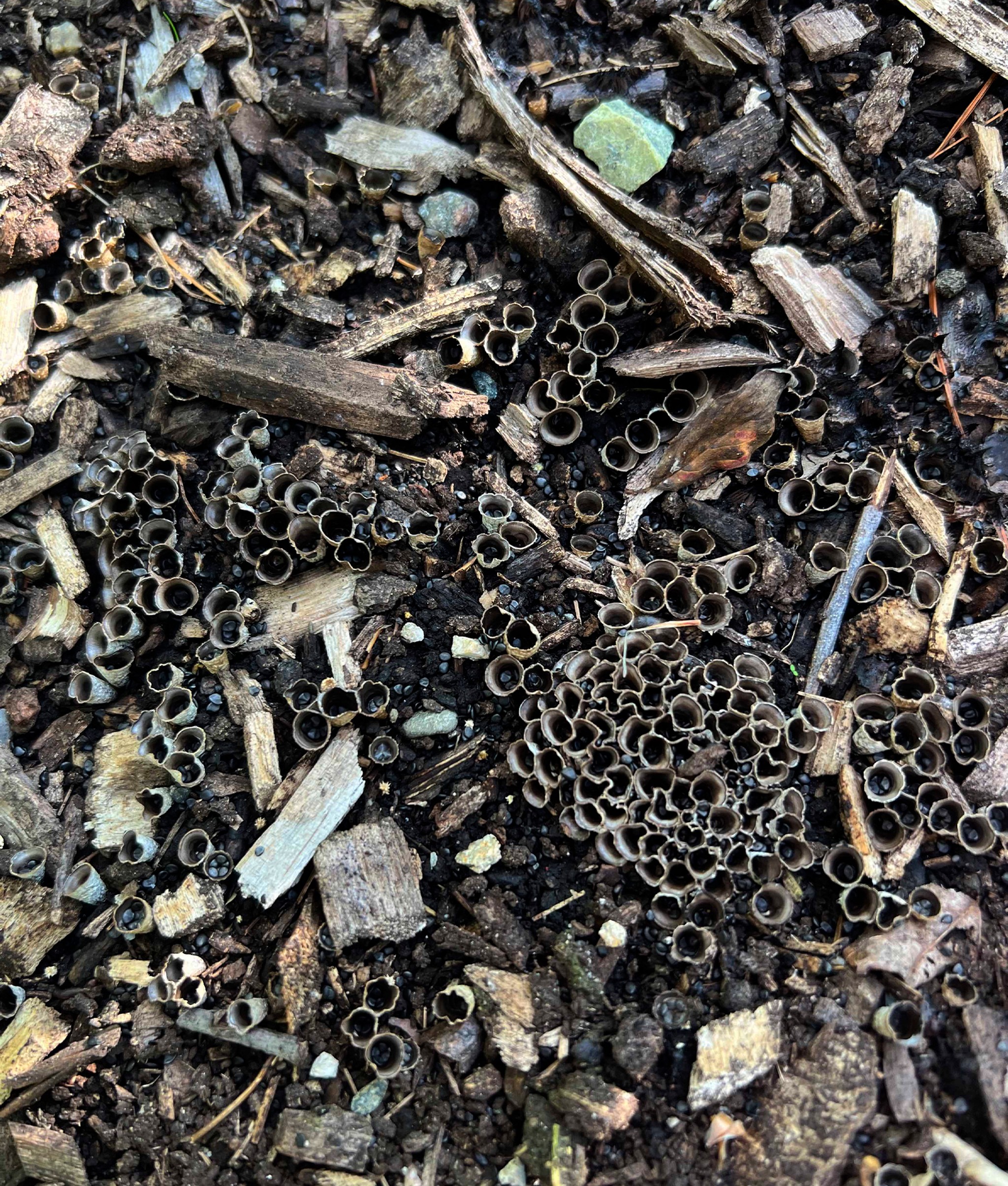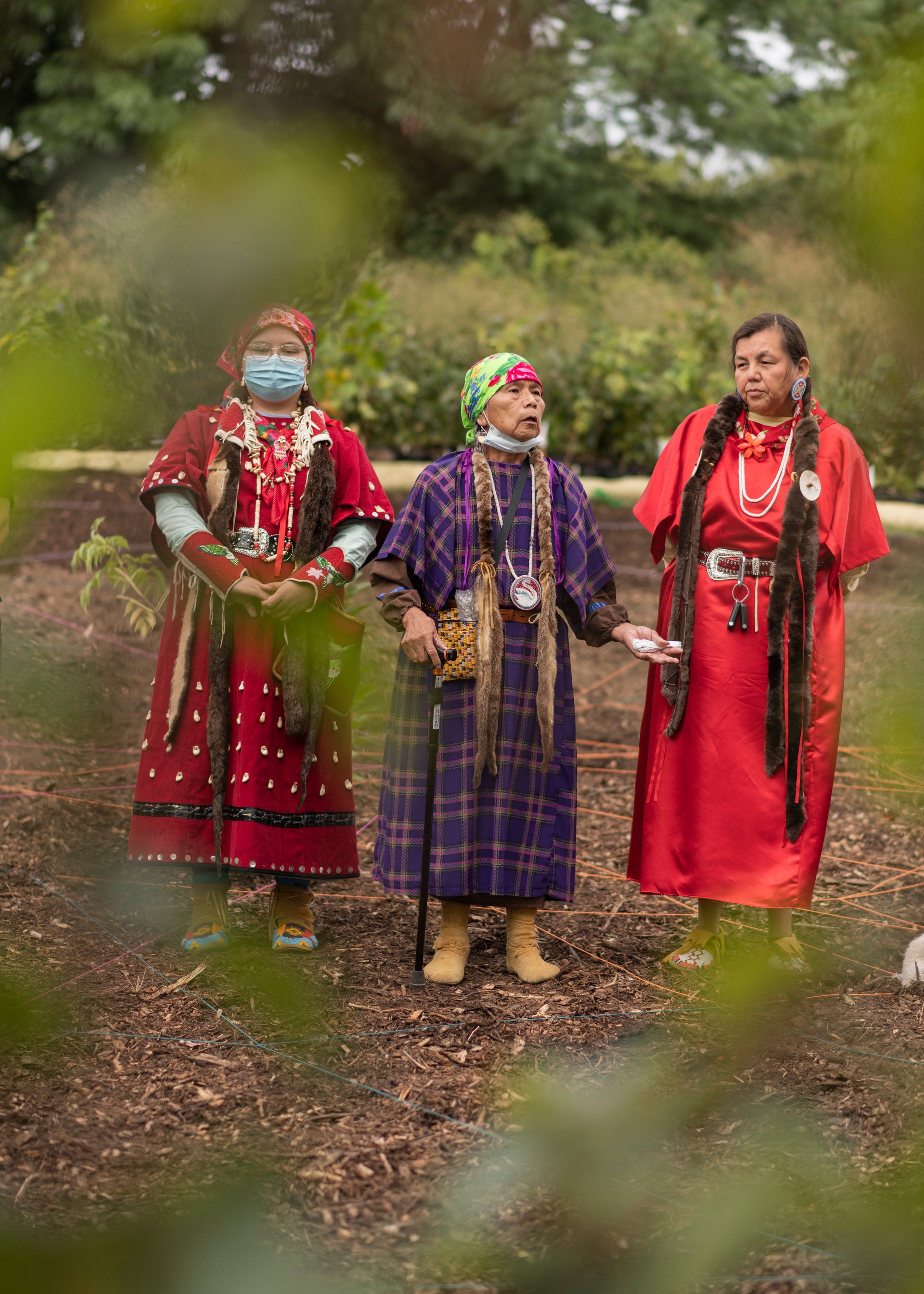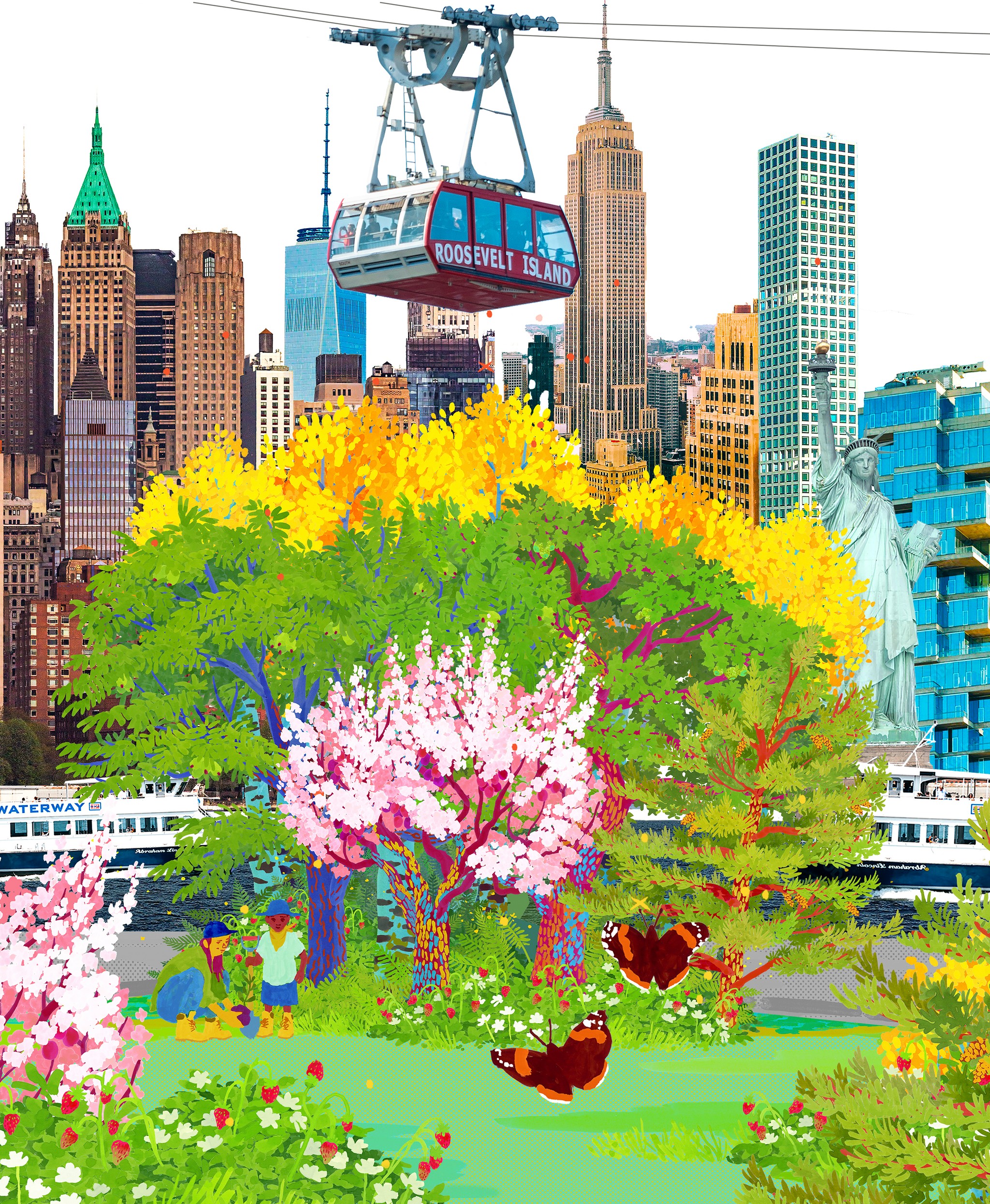Danehy Park Forest
A forest on a former landfill in Cambridge.
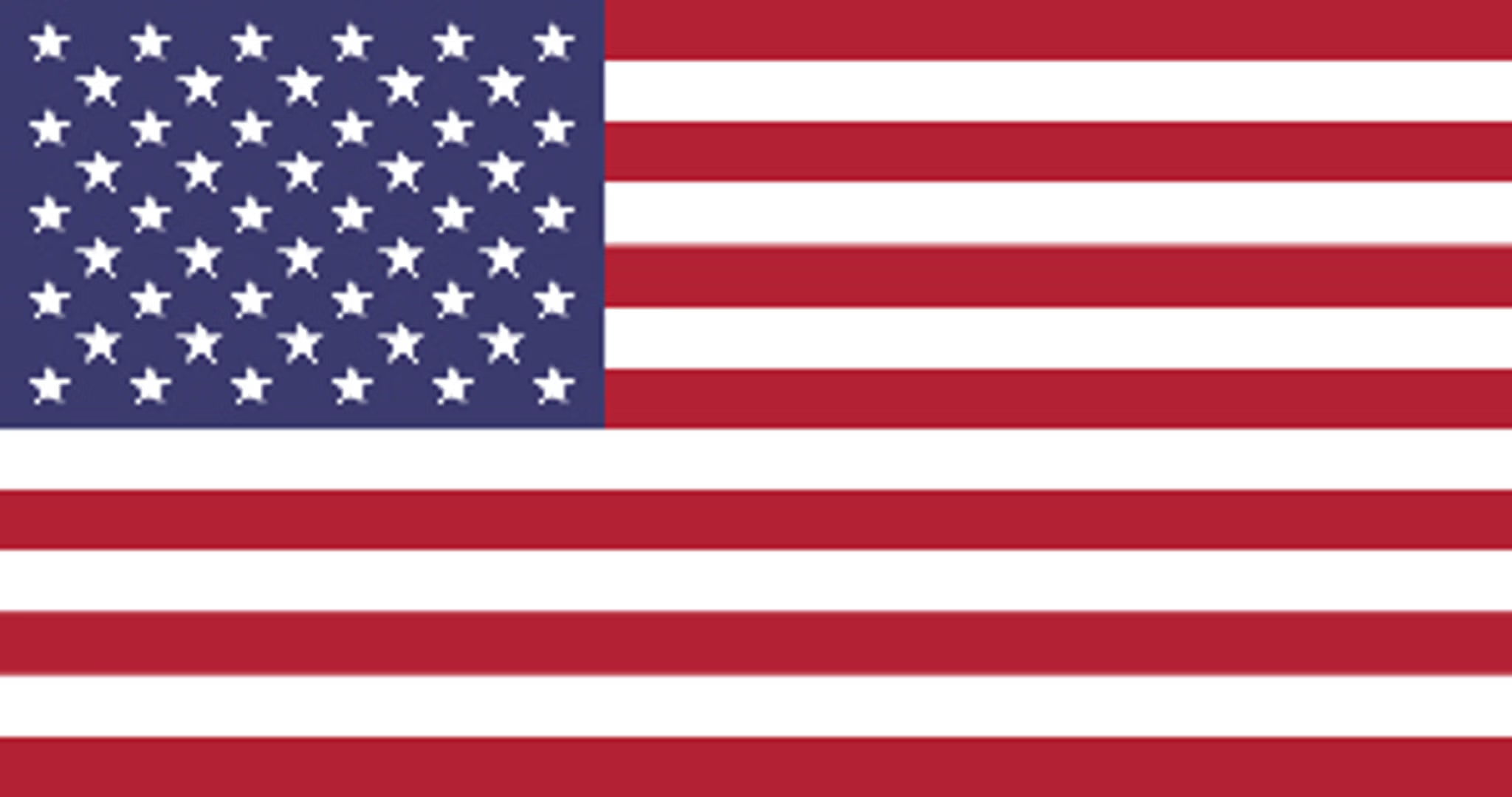

0
Trees
0
Square Feet
0
Native Species
Self-sustaining Forest
Planted in September 2021, this forest has experienced early succession, where some species are thriving while others have been shaded out. Tulip trees (Liriodendron tulipifera), American elms (Ulmus americana), and silver maples (Acer saccharinum) are doing well, but other species like red birches (Betula albosinensis) and grey alders (Alnus incana) have struggled. This is a natural part of forest development and the transition toward ecological complexity, where shrubs and small plants are often shaded out by growing trees, with shade acting as a key driver of succession. We have hypothesized that the abundance of staghorn sumac (Rhus typhina) may have accelerated this process.
Despite these challenges, the emergence of oak (Quercus spp.) beneath the sumac indicates that the forest is progressing towards more complex layers of growth. To support this transition, we added compost tea to stimulate the soil’s fungal networks, enriching the microbiome and boosting plant health. We also removed invasive species like goldenrods (Solidago spp.) and ground ivy (Glechoma hederace) to reduce competition.
The presence of eastern tiger swallowtail butterflies (Papilio glaucus) and diverse birdlife, with nests scattered throughout the forest, highlights the vibrant biodiversity. Fallen sycamore leaves are also creating mulch that improves soil quality, helping the forest mature through its natural stages of succession.
Forest Maker
Ethan Bryson
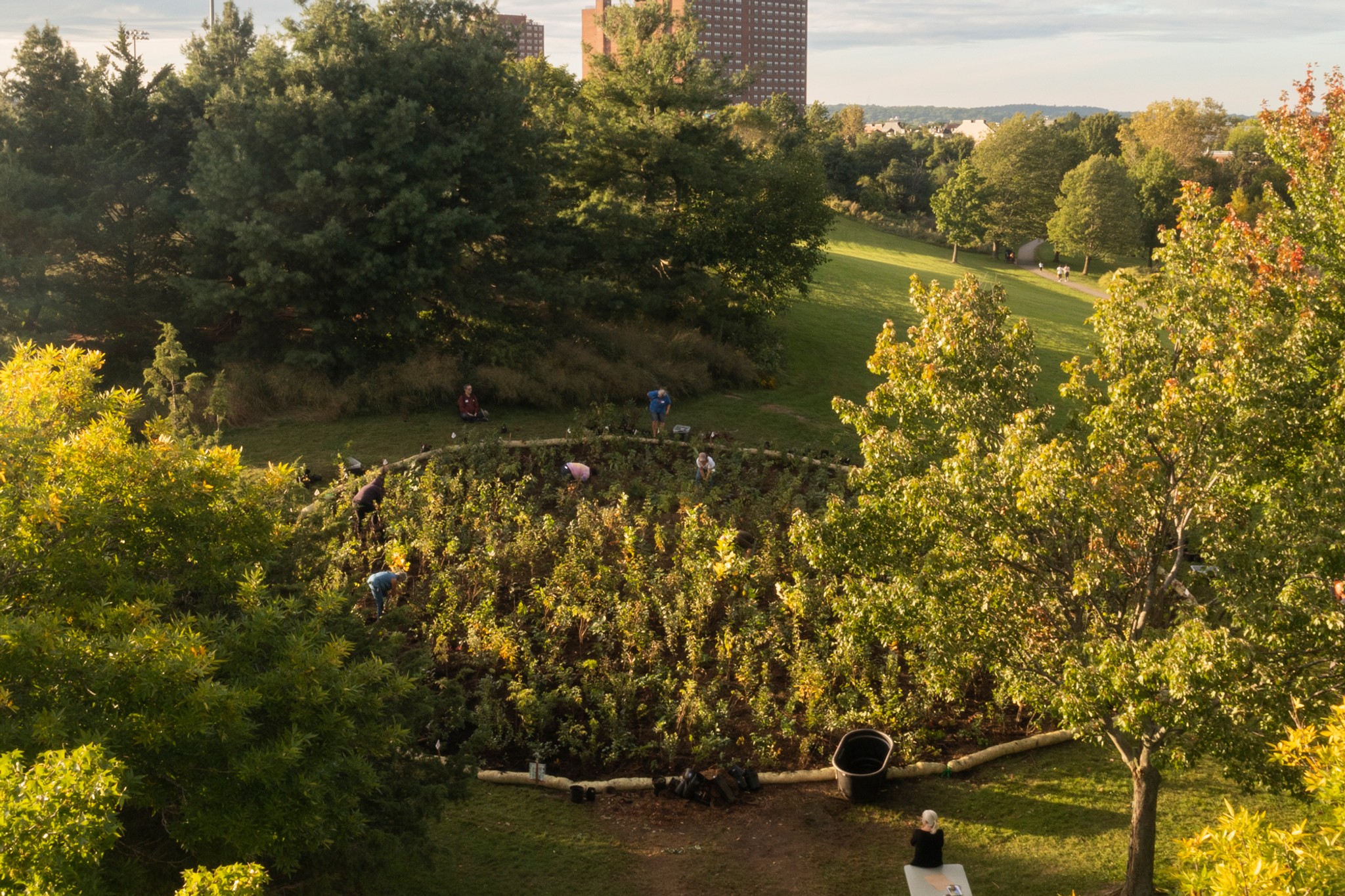

Ecosystem Restored
Final report: 28.11.2024
After approximately three years our SUGi Pocket Forests become self-sustaining. They no longer require human maintenance or watering, and can be handed over to Nature for biodiversity and complexity to naturally develop.
0%
Survival Rate
0
People living within 300 meters
0
kg of potential CO2 sequestration
Biodiversity
Biodiversity is all the different kinds of life you'll find in one area—the variety of animals, plants, fungi, and even microorganisms like bacteria that make up our natural world. Each of these species and organisms work together in ecosystems, like an intricate web, to maintain balance and support life.
0
Potential number of mammals
0
Potential number of birds
0
Potential number of amphibians
Urban Heat Profile
The Urban Heat Island Effect is affecting cities more and more each year and temperetures in urban areas can go up to 12 degrees hotter. This can be reduced and prevented by planting urban forests like this. We collected the air temperatures on a hot day in June at Danehy Park and saw amazing results.
0°C
Surface Temperature Difference

“This first Miyawaki Forest for the Cambridge community is an important local example of the ecosystem restoration. We hope to bring the benefits of nature closer to more schools, parks and hot spots in the city to make neighborhoods more resilient.”
Paula Phipps, Associate Director Biodiversity for a Livable Climate
Forest Report: 2023
0 Years
Forest Age
0%
Survival Rate
0m
Average of Tallest 3 Trees
There has been so much growth in the Danehy Park Forest in a single year! The progress has been astounding over this growing season as the young forest was blessed with abundant rainfall through the summer and fall (in contrast to the challenge of last summer’s drought during the forest’s first growing season).
We started to see the canopy develop and the density take shape. Quaking aspens (Populus tremuloides) and staghorn sumacs (Rhus typhina) shot up and have been doing especially well, as have some silver maples (Acer saccharinum), american sycamores (Platanus occidentalis), elderberries (Sambucus canadensis, and tulip trees (Liriodendron tulipfera).
As the forest develops and evolves, there is much more to see, and community members and visitors have shared both enthusiasm and sometimes criticism, and their own perspectives on what they feel is working or not working. In particular, there has been some fear around the success of the staghorn sumac and how it might shade out some of the slower growing trees that are meant to dominate the canopy in the long term (maples, oaks, pines, etc.). However, I have been pleased to see how adjacent trees seem spurred on in vertical growth to compete, and remain steadfast that pruning and coppicing is not part of the method, and we must wait for the natural progression of the forest to take shape.
The dense canopy’s development has also made a tremendous difference in suppressing encroaching growth. Some weeds (or early successional ground cover) have continued to pop up around the forest’s edge, but are nearly absent from the interior. Growth inside is so thick that I had to wait until leaf drop had started in autumn to take annual measurements in the center. Entering the area is like entering another world - dark, lush, and teeming with life. A day after rain, moisture continues to glisten on some understory leaves, and crickets’ chirping and birdsong surrounds you, a soothing contrast to city noise beyond. Fallen leaves decay into natural mulch, smelling of autumn and fresh earth.
Many people learned about the forest from August coverage in the New York Times, and we’ve met several people stopping by to see the forest as a key site on their visit to the Boston area. At two years, the Danehy Park forest leads the way for several other regional plantings that have followed, and the inspiration continues.
- Maya Dutta, Biodiversity for a Livable Climate
Biodiversity Notes:
In spring and summer, dragonflies’ and bees’ buzzing accompanies the birds, and flowers, berries, and rose hips break up the bright green scape with color. Across seasons, there is so much change and detail to see, and those who have helped plant or care for the forest have expressed excitement to watch this development. We’ve hosted a number of maintenance and community gatherings, at which we circle around, pointing out what we see and feel intrigued by. Participants noticed leafroller caterpillars, ground fungi, ripening elderberry bunches, and various types of birds and bees.
Forest Report: 2022
0 Months
Forest Age
0%
Survival Rate
0m
Average of Tallest 3 Trees
Danehy Park Forest is growing beautifully. With the help of partners from the City of Cambridge Urban Forestry and local community members, the forest has proven to be a budding ecosystem for a wide diversity of life. While the planted trees grow strong and spread their canopy, new seedlings germinate in the recharged soil. Since our planted trees are too young to be seeding a new generation, we believe it is the improvement in the soil and the network of relatives and companions that allows seeds that were dispersed into or lying dormant in the existing soil to sprout.
One of the most notable events in this first year was the widespread drought through Massachusetts during the summer, which reached a critical level. While our forest showed some signs of distress, it was largely spared from the drying, leaf drop, and death that struck a lot of the vegetation in the region. The watering provided as part of the forest’s maintenance was instrumental in keeping the forest alive. Though the drought conditions likely inhibited the growth from what we might have seen otherwise, we still saw a high survival rate and a doubling in height on average from the plants.
- Maya Dutta, Biodiversity for a Livable Climate
Biodiversity Notes:
It is a joy to witness the richness of this young forest enjoyed by birds, earthworms, bees, butterflies, dragonflies (among many other insects), and fungi. During the growing season, each trip to the forest was marked by the hum of life - so much buzzing and chirping among rustling leaves. This unique soundscape, along with the smell of rich soil and the vibrant colors of the plants, have made the forest a sensory haven.
Biodiversity identified includes: cabbage white butterfly (Pieris rapae), American robin (Turdus migratorius), black saddlebags dragonfly (Tramea lacerata), and several other types of dragonflies and damselflies (members of the order Odonata), bumblebees (members of the genus Bombus), and several other types of bees. We have also seen field sparrow (Spizella pusilla), grasshopper sparrow (Ammodramus savannarum), house finch (Haemorhous mexicanus) and red-tailed hawk (Buteo jamaicensis). Lastly, we have seen birds nest fungi (members of the Nidulariaceae family) in the forest too.
Besides the listed biodiversity, there have been signs of rabbits (evidenced by droppings), and many observed organisms not identified down to the species. These include some sightings of woodpeckers, numerous flies, gnats, aphids, spiders, mosquitos, multiple crickets and beetles, what may be honey mushrooms, and what may be wine cap Stropharia mushrooms.
“I’m thrilled to be creating a Miyawaki forest for the Cambridge community to experience and learn about native plants. Nurturing an awareness of native plants can build a brighter future and sense of inclusiveness as one realizes that diversity is critical for a healthy ecosystem.”
Ethan Bryson, SUGi Forest Maker
Planting: September 2021
